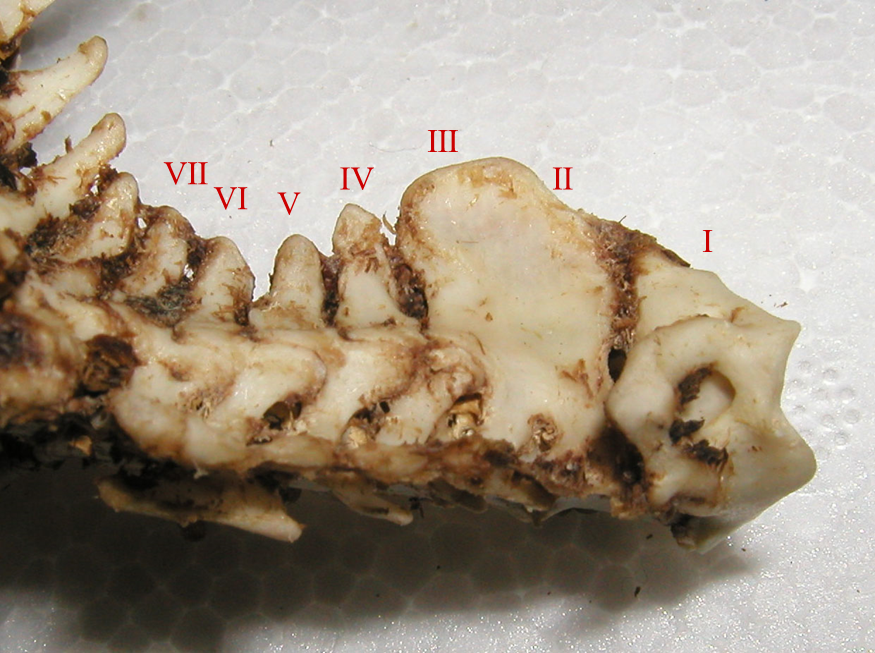East African springhare on:
[Wikipedia]
[Google]
[Amazon]
The East African springhare (''Pedetes surdaster''), is not closely related to the
 Unlike South African springhare (Pedetes capensis), the second and third cervical vertebrae are fused in this species.
Unlike South African springhare (Pedetes capensis), the second and third cervical vertebrae are fused in this species.
/ref> It moves in bounds of up to 2 m and has a long tail fringed with black hairs which provides balance. It can sit up on its haunches like aPedetes surdaster (East African Spring-hare)
/ref>
hare
Hares and jackrabbits are mammals belonging to the genus ''Lepus''. They are herbivores, and live solitarily or in pairs. They nest in slight depressions called forms, and their young are able to fend for themselves shortly after birth. The ge ...
, which is a lagomorph
The lagomorphs are the members of the taxonomic order Lagomorpha, of which there are two living families: the Leporidae (hares and rabbits) and the Ochotonidae (pikas). The name of the order is derived from the Ancient Greek ''lagos'' (λαγ� ...
, but is a member of the Pedetidae
The Pedetidae are a family (biology), family of mammals from the rodent order. The two living species, the springhares, are distributed throughout much of southern Africa and also around Kenya, Tanzania, and Uganda. Fossils have been found as far ...
, a rodent
Rodents (from Latin , 'to gnaw') are mammals of the order Rodentia (), which are characterized by a single pair of continuously growing incisors in each of the upper and lower jaws. About 40% of all mammal species are rodents. They are na ...
family.
Taxonomy
''Pedetes surdaster'' was recognised by Matthee and Robinson in 1997 as a species distinct from the southern African springhare ''(P. capensis)'' based on genetic, morphological, andethological
Ethology is the scientific study of animal behaviour, usually with a focus on behaviour under natural conditions, and viewing behaviour as an evolutionarily adaptive trait. Behaviourism as a term also describes the scientific and objective ...
differences. ''P. capensis'' from South Africa has fewer chromosome
A chromosome is a long DNA molecule with part or all of the genetic material of an organism. In most chromosomes the very long thin DNA fibers are coated with packaging proteins; in eukaryotic cells the most important of these proteins are ...
s (2n= 38) than does ''P. surdaster'' which has (2n = 40) and some other genetic variations. The species was confirmed by Dieterlen in 2005.
 Unlike South African springhare (Pedetes capensis), the second and third cervical vertebrae are fused in this species.
Unlike South African springhare (Pedetes capensis), the second and third cervical vertebrae are fused in this species.
Distribution
This species is found in central and southern Kenya and most of Tanzania. A single specimen has been recorded in Uganda near the Kenya border, at Mount Moroto. It is found from sea level up to an altitude over 2,000 m.Description
The East African springhare resembles a small kangaroo (a marsupial in the familyMacropodidae
Macropodidae is a family of marsupials that includes kangaroos, wallabies, tree-kangaroos, wallaroos, pademelons, quokkas, and several other groups. These genera are allied to the suborder Macropodiformes, containing other macropods, and ar ...
of Oceania), and is possibly about the size of a rabbit
Rabbits, also known as bunnies or bunny rabbits, are small mammals in the family Leporidae (which also contains the hares) of the order Lagomorpha (which also contains the pikas). ''Oryctolagus cuniculus'' includes the European rabbit speci ...
(''Oryctolagus cuniculus''). It is mid-brown, has large erect ears, very short fore legs, and long powerful hind legs.On ''Dipetalonema manson-bahri'' n.sp., from the Spring-hare, ''Pedetes surdaster larvalis'', with a Note on its Development in Fleas/ref> It moves in bounds of up to 2 m and has a long tail fringed with black hairs which provides balance. It can sit up on its haunches like a
squirrel
Squirrels are members of the family Sciuridae, a family that includes small or medium-size rodents. The squirrel family includes tree squirrels, ground squirrels (including chipmunks and prairie dogs, among others), and flying squirrels. Squ ...
./ref>
Ecology
The East African springhare isnocturnal
Nocturnality is an animal behavior characterized by being active during the night and sleeping during the day. The common adjective is "nocturnal", versus diurnal meaning the opposite.
Nocturnal creatures generally have highly developed sens ...
and spends the day in an extensive system of burrows. It lives in semiarid grassland habitats. The diet is the green parts of plants, roots and other vegetable matter, and occasionally insect
Insects (from Latin ') are pancrustacean hexapod invertebrates of the class Insecta. They are the largest group within the arthropod phylum. Insects have a chitinous exoskeleton, a three-part body ( head, thorax and abdomen), three pairs ...
s.
References
{{Taxonbar, from=Q777220East African springhare
The East African springhare (''Pedetes surdaster''), is not closely related to the hare, which is a lagomorph, but is a member of the Pedetidae, a rodent family.
Taxonomy
''Pedetes surdaster'' was recognised by Matthee and Robinson in 1997 as a ...
Mammals of Kenya
Mammals of Tanzania
Fauna of East Africa
East African springhare
The East African springhare (''Pedetes surdaster''), is not closely related to the hare, which is a lagomorph, but is a member of the Pedetidae, a rodent family.
Taxonomy
''Pedetes surdaster'' was recognised by Matthee and Robinson in 1997 as a ...